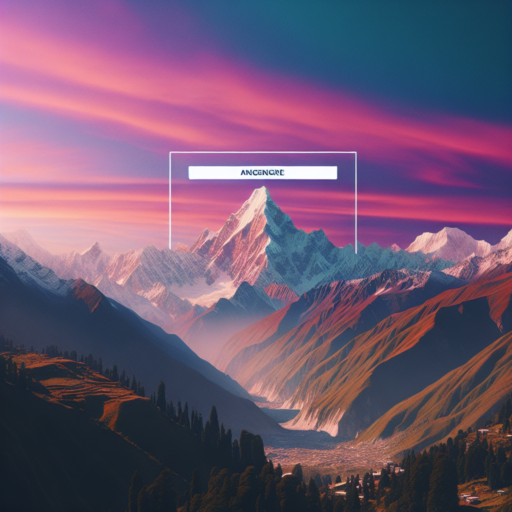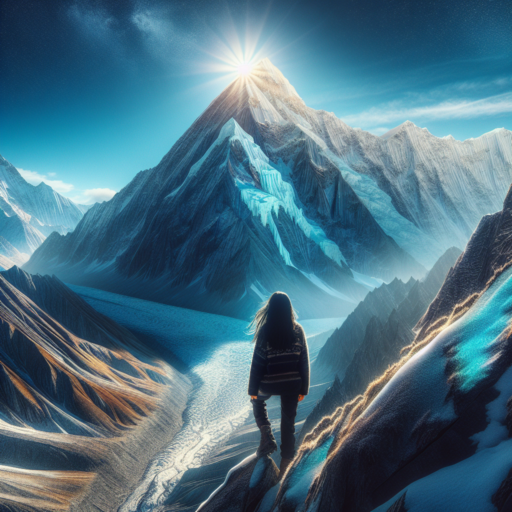What is Jannu Peak?
Jannu Peak, also known as Kumbhakarna, is a towering marvel nestled within the Himalayan range in eastern Nepal. Standing as the 32nd highest mountain in the world, Jannu Peak boasts a staggering elevation of 7,710 meters (25,295 feet) above sea level. It is renowned for its daunting North Face, a challenge that beckons to climbers and adventurers from around the globe.
The significance of Jannu Peak extends beyond its geographical and physical attributes. Embedded deeply in local culture, Jannu is revered by the indigenous communities. It is considered a sacred entity in certain cultures, embodying spiritual values and beliefs that have been passed down through generations. This adds a layer of mystique and allure to the peak, elevating it from a mere mountain to a symbol of cultural heritage.
Exploration and climbing attempts on Jannu Peak have been part of mountaineering history for decades. Despite its less towering height compared to Mt. Everest, its technical challenges make it a formidable climb. The peak’s North Face, in particular, is noted for its immense vertical relief and complex topography, presenting an intense challenge even for the most experienced climbers. Successful ascents are celebrated feats within the mountain climbing community, underscoring the peak’s reputation as a test of skill and endurance.
The History and Significance of Jannu Peak
The history of Jannu Peak, also known as Kumbhakarna, is a fascinating tale that stretches back centuries, intersecting with legends, geographical exploration, and monumental climbing achievements. This majestic peak, standing at 7,710 meters above sea level, is not only a geographical marvel but also holds a significant place in the hearts of local communities and mountaineers worldwide. Its challenging terrain and striking prominence have made it a focal point for climbers seeking not just adventure but a profound engagement with the Himalayan landscape.
Jannu Peak’s historical significance is deeply rooted in local folklore and the broader narrative of Himalayan exploration. According to local lore, the peak is home to a deity and has long been considered a spiritual guardian of the area. This reverence adds a rich cultural layer to Jannu’s physical grandeur, imbuing the mountain with a sense of sacredness. The first successful ascent in 1962 by a French expedition led by Lionel Terray and Jean Couzy marked a turning point in Himalayan mountaineering, showcasing the peak’s formidable north face, known for its technical difficulty and severe climatic conditions.
The exploration and attempts to conquer Jannu have contributed significantly to our understanding of high-altitude climbing and the unique challenges it presents. Each expedition has added to the wealth of knowledge about the mountain’s geography, weather patterns, and logistical requirements, contributing immensely to the field of mountaineering. Moreover, Jannu Peak serves as a natural laboratory for scientists and climbers to study environmental changes and their impacts on high-altitude ecosystems.
How to Prepare for a Climb to Jannu Peak
Embarking on a challenging journey to the Jannu Peak requires meticulous preparation and an understanding of the arduous path ahead. It’s not just about physical readiness but also about equipping yourself with the necessary gear and knowledge to ensure a safe and successful ascent.
Physical Conditioning
Physical conditioning is paramount when preparing for Jannu Peak. This involves a comprehensive training regimen focusing on cardiovascular fitness, strength training, and high-altitude acclimatization exercises. Engage in activities like long-distance running, cycling, and swimming to enhance your endurance. Additionally, incorporating hill climbs and stair running into your workout can simulate the incline you’ll face on the actual climb. Don’t overlook the importance of rest and recovery to prevent overtraining injuries.
Necessary Gear and Equipment
Selecting the right gear and equipment is crucial for the harsh conditions you’ll encounter. Essential items include a quality climbing harness, ice axe, crampons, and thermal clothing. Ensure your boots are well-fitted and suited for the climb’s unique terrain. Carrying a reliable navigation system, such as a GPS device, alongside traditional maps and compasses, offers a safety net in the unpredictable landscape. Always test your gear before the trip to guarantee its functionality.
Ultimately, the key to a successful climb to Jannu Peak lies in rigorous preparation, from honing your physical condition to strategically gathering and familiarizing yourself with your climbing gear. It’s a journey that tests the limits of your endurance, discipline, and willpower. By following these preparatory steps, you prime yourself not just for the ascent but for the profound personal achievements that await at the summit.
Best Season to Visit Jannu Peak
Deciding on the best season to visit Jannu Peak is crucial for climbers and adventure enthusiasts aiming for a successful expedition. Known for its breathtaking beauty and challenging climbs, Jannu Peak, also referred to as Kumbhakarna, demands careful timing to truly appreciate its magnificence and the surrounding landscapes.
Spring: The Ideal Climbing Window
Spring, stretching from April to early June, stands out as the prime time for treks and climbs at Jannu Peak. During these months, the weather stabilizes, offering clear days and moderately cold nights, which makes it perfect for both ascending the peak and enjoying the panoramic vistas. The melting snow from winter reveals spectacular trails and the base camp becomes a hub for climbers from around the globe.
Autumn: The Second Best Time
Following spring, autumn emerges as the second preferred season for attempting Jannu Peak, specifically from September to November. This period is characterized by after-monsoon clarity, where the skies clear up and the temperature remains comfortable for climbing activities. Furthermore, the risk of avalanches is significantly lower, making it a safer option for those looking to explore this majestic mountain.
Understanding the Challenges of Climbing Jannu Peak
Climbing Jannu Peak, also known as Kumbhakarna, is an endeavor that pushes even the most seasoned mountaineers to their limits. Situated in the eastern part of Nepal, this imposing mountain is renowned for its technical difficulties and harsh weather conditions. Exploring the challenges it presents is crucial for anyone considering an attempt to summit this majestic peak.
The Sheer Technical Difficulty
The ascent of Jannu Peak is fraught with technical challenges that demand a high level of skill and experience from climbers. The mountain’s north face, in particular, is infamous for its steep, ice-covered slopes and seracs that can collapse without warning. Navigating this terrain requires not only exceptional climbing skills but also an in-depth understanding of ice and snow conditions, making it a formidable obstacle in the climbers’ path.
Extreme Weather Conditions
Another significant factor that adds to the difficulty of climbing Jannu Peak is its extreme weather conditions. The region is prone to sudden storms, which can bring heavy snowfall, severe winds, and drastically reduce visibility in a matter of minutes. These conditions not only make the ascent more dangerous but can also trap climbers on the mountain for days, testing their endurance and survival skills to the utmost.
Despite these obstacles, the allure of Jannu Peak remains undiminished for mountaineers around the world. The mountain’s breathtaking beauty and the sheer challenge it represents continue to attract those who seek to test their limits against nature’s might. Understanding these challenges is the first step for anyone dreaming of standing on the summit of Jannu Peak.
The Unique Ecosystem around Jannu Peak
The area around Jannu Peak is renowned for its exceptional biodiversity and unique ecosystem. This majestic mountain, also known as Kumbhakarna, is part of the Himalayas and it supports a wide variety of flora and fauna that are specially adapted to thrive in its harsh, yet beautiful, alpine environment. The high altitude, together with the isolated geography, has shaped a distinctive biosphere where rare and endemic species flourish.
Flora around Jannu Peak boasts a remarkable adaptability and variety. The lower slopes are carpeted with dense forests of rhododendrons and conifers, which gradually give way to alpine meadows teeming with wildflowers as one ascends. These wildflowers, including edelweiss, are not only stunning to behold but also play a crucial role in sustaining the local bee population, which in turn, supports the broader ecosystem through pollination.
Endemic Wildlife is a cornerstone of the ecosystem’s uniqueness. The elusive snow leopard, red pandas, and Himalayan tahr are among the notable residents. These species have developed exceptional adaptations to survive in the cold and rugged terrain. Their existence is pivotal not only for the ecological balance but also for the cultural heritage of the surrounding communities, who regard these creatures with great reverence and consider them integral to the natural world’s spiritual essence.
Safety Tips for Climbers Heading to Jannu Peak
Heading to Jannu Peak is an exhilarating adventure for climbers around the world. Also known to many as Kumbhakarna, this majestic mountain presents considerable challenges and risks. Ensuring safety should be a priority for every climber embarking on this journey. Here, we highlight essential safety tips that can help climbers navigate their ascent with greater security and confidence.
Understand the Terrain
One of the key safety measures when tackling Jannu Peak is a thorough understanding of the terrain. Researching the mountain’s geography, weather patterns, and potential hazards can significantly reduce the risks associated with this climb. Familiarizing yourself with the route and its difficulties will enable climbers to prepare adequately and make informed decisions whilst on the mountain.
Equip Properly
Another critical aspect of ensuring a safe ascent is to equip properly. Climbers should invest in high-quality climbing gear, including reliable ropes, harnesses, crampons, and protective clothing. Having the right equipment tailored to the specific challenges of Jannu Peak, such as its steep ice walls and unpredictable weather, can make a substantial difference in safety and comfort during the climb.
Adhering to these safety tips can significantly mitigate the risks involved in climbing Jannu Peak. While the mountain’s allure is undeniable, remembering the importance of preparation, understanding the terrain, and ensuring proper equipment will help climbers achieve their goal while minimizing dangers.
Local Guides and Climbing Expeditions to Jannu Peak
Choosing the Right Local Guide for Your Jannu Adventure
Embarking on climbing expeditions to Jannu Peak is not just about physical endurance and mental preparation; it’s also about finding the perfect local guide who understands the terrain, weather, and the unique challenges that Jannu presents. Local guides bring invaluable insights into the cultural significance of Jannu, enhancing your climbing experience. When selecting a guide, ensure they have a proven track record of successful expeditions and prioritize safety alongside adventure.
What to Expect During Your Climb to Jannu Peak
The journey to the summit of Jannu Peak is filled with breathtaking landscapes, challenging ascents, and the profound satisfaction of conquering one of the world’s most demanding climbs. Climbing expeditions to Jannu require careful planning and coordination with your local guide to navigate the technical sections safely. Expect early starts, steep climbs, and the exhilarating experience of standing atop the «Mystery Peak,» surrounded by panoramic views of the Himalayas.
Preparing for Your Expedition: Tips from Seasoned Experts
Preparation is key to a successful and enjoyable expedition to Jannu Peak. Seasoned climbers advise focusing on physical fitness, acclimatization, and honing technical climbing skills in the months leading up to your adventure. Equally important is preparing mentally for the challenges ahead. Engaging with your local guide to understand the route, weather patterns, and potential difficulties will ensure you are well-equipped for the demanding ascent to Jannu’s summit.
Photography and Sightseeing Opportunities at Jannu Peak
The majestic Jannu Peak, also known as Kumbhakarna, offers some of the most stunning photography and sightseeing opportunities for both amateur and professional photographers alike. Nestled in the heart of the Himalayas, this towering marvel boasts breathtaking landscapes and a unique geographical setting that makes every shot a masterpiece.
One of the most captivating aspects of Jannu Peak is its glorious sunrise and sunset views. Photographers often find themselves mesmerized by the golden hues that bathe the snow-capped peak, creating a perfect scenario for unforgettable landscape photography. The intricate play of light and shadow, especially during the golden hours, adds a mystical charm to the already majestic peak.
Exploring the Rich Biodiversity around Jannu Peak
Apart from the scenic landscapes, Jannu Peak is surrounded by a rich tapestry of biodiversity. This diversity offers a plethora of photography subjects, from exotic flora and fauna to the vibrant culture of the local communities living in its vicinity. The area around Jannu Peak serves not just as a backdrop for stunning photographs but also as an exploration ground for those interested in wildlife and cultural photography.
Best Spots for Photographers
- Base Camp View: The Base Camp of Jannu Peak provides an unparalleled vantage point for panoramic shots of the mountain and its surrounding valleys.
- Yalung Glacier: For those looking to capture the raw beauty of Jannu’s ice formations, the Yalung Glacier offers breathtaking perspectives.
- Traditional Villages: Photographing the traditional villages around Jannu Peak can give insights into the local culture and lifestyle, adding depth to any portfolio.
The unique combination of natural beauty and cultural richness makes Jannu Peak a must-visit destination for anyone passionate about photography and sightseeing. Whether it’s capturing the sheer grandeur of the peak or the delicate details of nature and human life that thrives in its shadow, Jannu Peak promises an enriching visual journey.
No se han encontrado productos.
How to Get to Jannu Peak: A Travel Guide
Navigating your way to the majestic Jannu Peak, also known as Kumbhakarna, is an adventure of a lifetime. Situated in the far eastern part of Nepal, this trek is not just a journey through mesmerizing landscapes but also a profound exploration of one’s physical and mental endurance. Understanding the best routes and essential preparations are key to a successful ascent.
Choosing the Right Route
The primary gateway to Jannu Peak is through the town of Taplejung, accessible by both air and land. From Kathmandu, adventurers can take a flight to Bhadrapur followed by a drive to Taplejung, or opt for a longer but scenic drive directly from the capital. Upon reaching Taplejung, trekkers encounter a mix of well-trodden paths and untouched terrains leading to the base camp. The most common route involves trekking through the Kanchenjunga Conservation Area, offering a rare glimpse into diverse ecosystems and vibrant cultures along the way.
Preparation and Permits
Preparing for the trek to Jannu Peak requires careful planning. Essential gear includes warm clothing, sturdy hiking boots, and navigation tools. It’s crucial to acclimate to the altitude, with several rest days built into your itinerary. Additionally, all trekkers must obtain a Kanchenjunga Conservation Area permit and a TIMS (Trekkers’ Information Management System) card, mandatory for exploring the region’s trails. Engaging a local guide is not only beneficial for navigation but also enriches the journey with insights into the local culture and environment.
Best Time to Visit
The ideal time for trekking to Jannu Peak falls between March to May in spring and from September to November during autumn. These months offer clear skies, manageable temperatures, and reduced chances of rain, making the journey more pleasant and the views of the Himalayas breathtakingly clear. Seasonal changes significantly impact the accessibility of routes and the overall experience, thus choosing the right time is crucial for adventurers seeking to conquer Jannu Peak.




